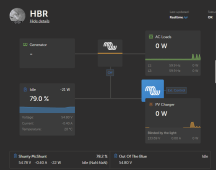brucenolan
New Member
1. Growatt SPF 12000T DVM MPV, low frequency inverter
2. 120/240 vac pure sine wave, split phase
3. 12 Kw
4. Idle/no load: 133 watts, measured 2.55 A @ 52.3 V
Spec: none published
5. No power-save/search mode in use, I'm always at least 500 watts
2. 120/240 vac pure sine wave, split phase
3. 12 Kw
4. Idle/no load: 133 watts, measured 2.55 A @ 52.3 V
Spec: none published
5. No power-save/search mode in use, I'm always at least 500 watts




